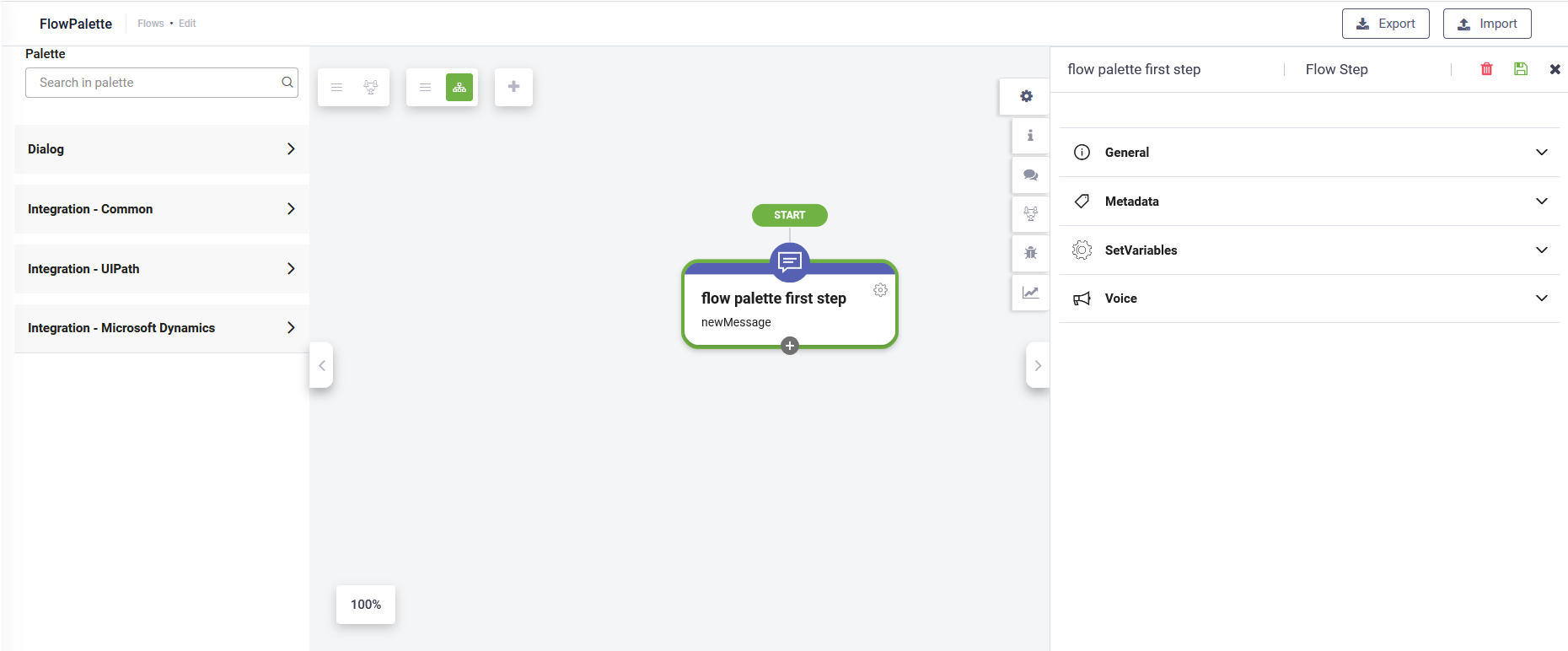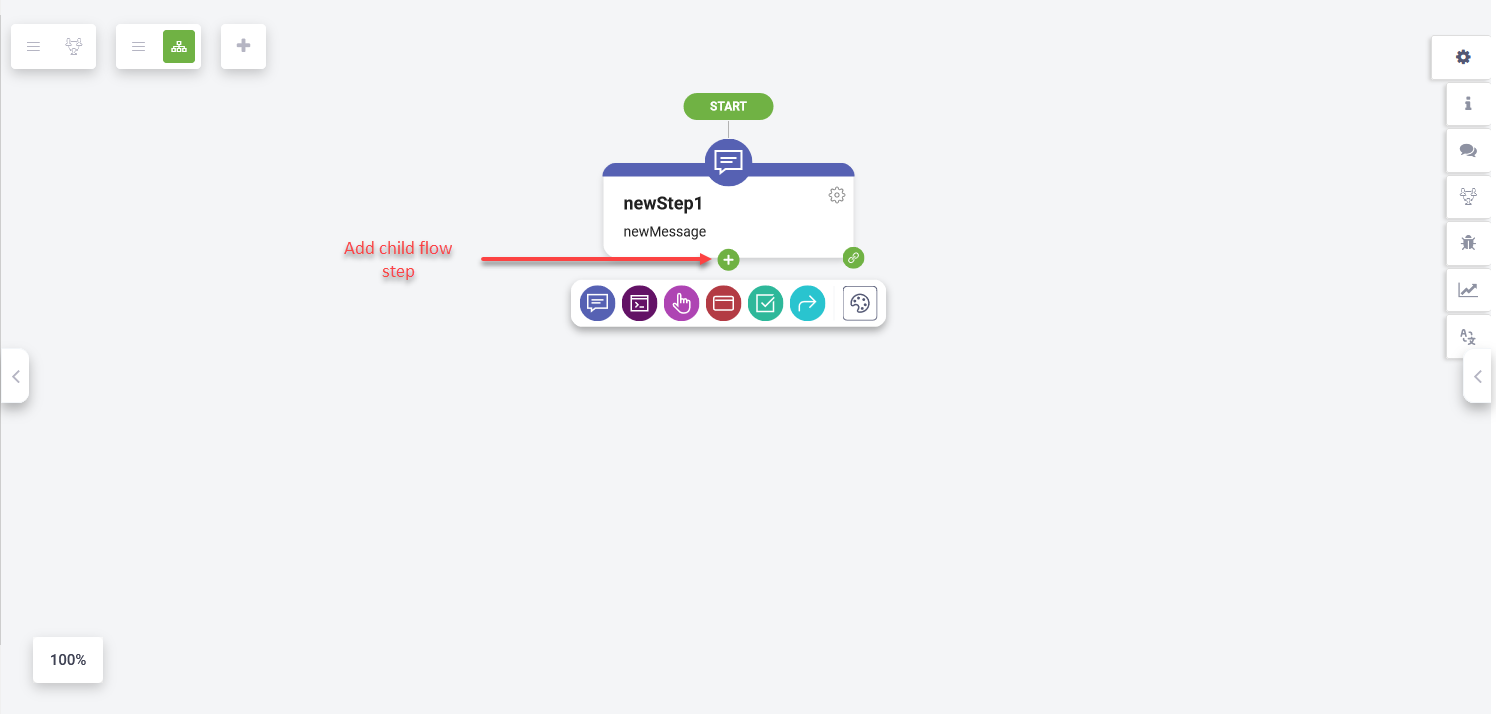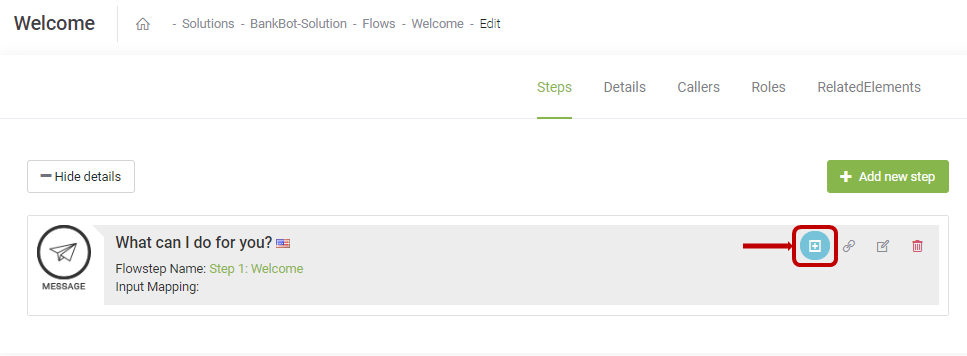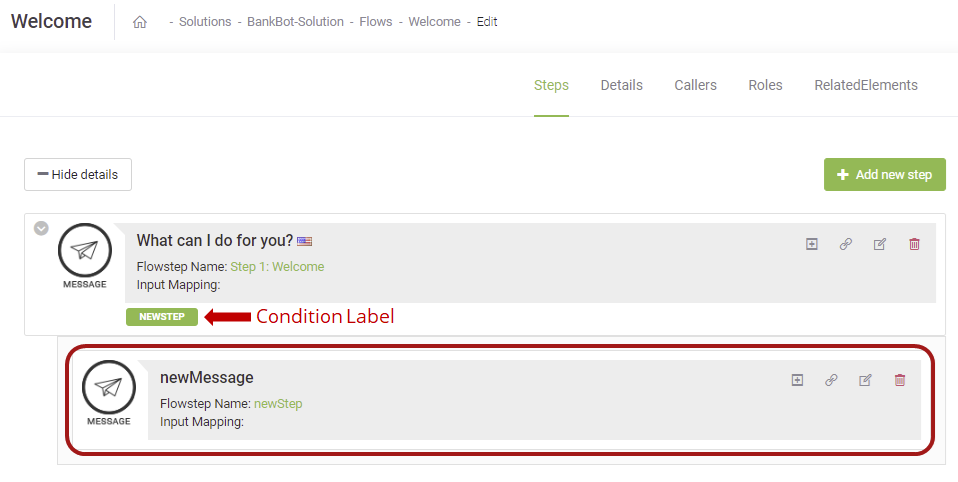Defining the Dialog
A dialog in the DRUID ChatBot Platform is a structured conversation that outlines responses to defined intents. It consists of one or multiple flow steps, each contributing to the overall interaction between the user and the bot.
Dialogs are crucial for bot functionality, as they dictate how the bot interprets user input and executes responses. To define a dialog effectively, it's essential to grasp how the chatbot processes user input and how the Flow Engine executes flow steps.
Follow these steps to define a dialog using the Flow Designer:
Step 1. Add the first flow step
- Access the Flow Palette and select the desired flow step type from the appropriate category.
- Drag the selected flow step type into the working area to add it as the first step.
- Customize the flow step based on your requirements using the Flow Step Editor. To configure the flow step, click on it and on the Actions menu, click the settings icon (
 ). In the Flow Step Editor make the desired flow step configuration. For information on how to configure flow steps, see Generic Flow Step Configuration Settings and Flow Step Types.
). In the Flow Step Editor make the desired flow step configuration. For information on how to configure flow steps, see Generic Flow Step Configuration Settings and Flow Step Types.
Step 2. Add child flow steps
For complex bot designs requiring multiple steps and nested structures, add child flow steps.
Drag predefined flow steps from the Flow Palette onto parent steps or use the Add step icon ( ). Customize child steps as needed, ensuring a logical flow of conversation.
). Customize child steps as needed, ensuring a logical flow of conversation.
You can also add a common predefined child flow step by clicking the Add step icon ( ) displayed at the bottom of an existing step (that will be the parent step). The common flow step types toolbar appears.
) displayed at the bottom of an existing step (that will be the parent step). The common flow step types toolbar appears.
Select the step type. A child step of the selected type appears on the working area under the parent step. An arrow connects the parent flow step with its child flow steps in a tree-like structure.
To add a child step on a flow step, click the AddChildStep icon displayed in line with the step.
A new child step of type message is added to the flow step. On the main flow step, a green label is added. This label allows you to specify the condition (if any) based on which the Flow engine will execute the child flow step. For more information on the logic the chatbot uses to process user input, see Conversation Lifecycle.
Step 3. Fine-tune the dialog with extensive configurations
DRUID offers extensive configurations to tailor dialogs to your bot's requirements:
- Set up conditions on steps to execute child steps selectively. For more information, see Setting Up Conditions on Steps.
- Link steps to jump to other points in the dialog based on specified conditions. For more information, see Linking Two Steps.
- Rearrange flow steps, adjust their order, or delete unnecessary steps as needed. For more information, see Moving Steps, Changing the Steps Order and Deleting Steps.
- Configure flow steps to store user input in entities, execute internal actions, and more.




